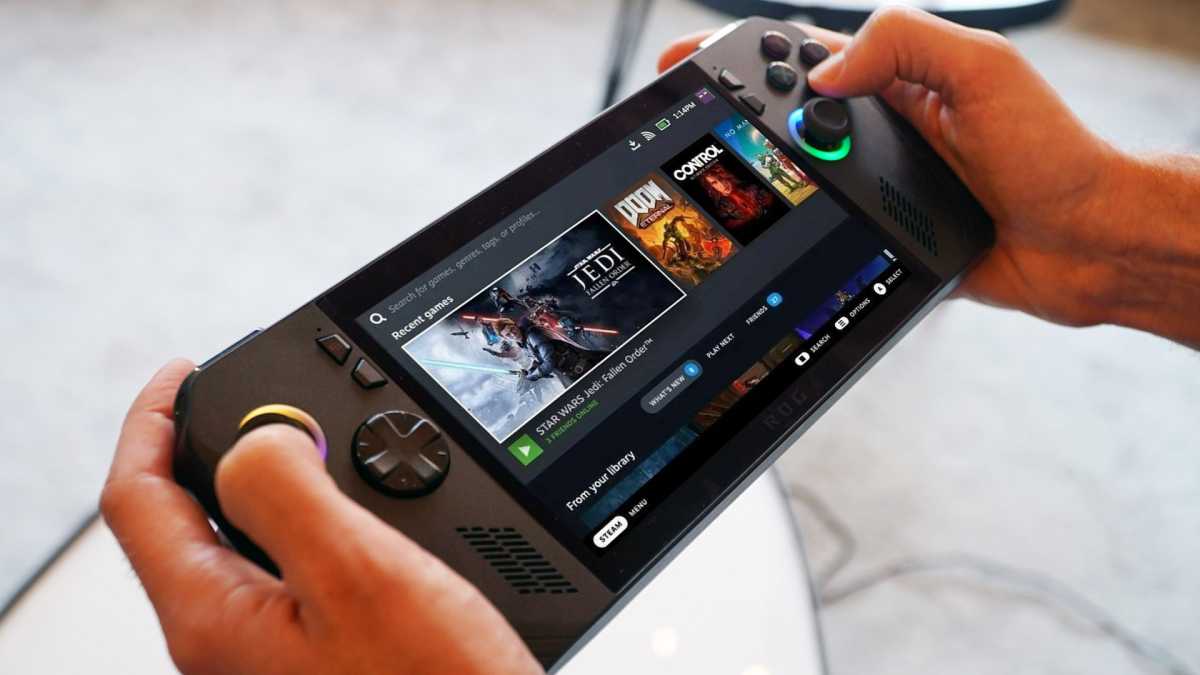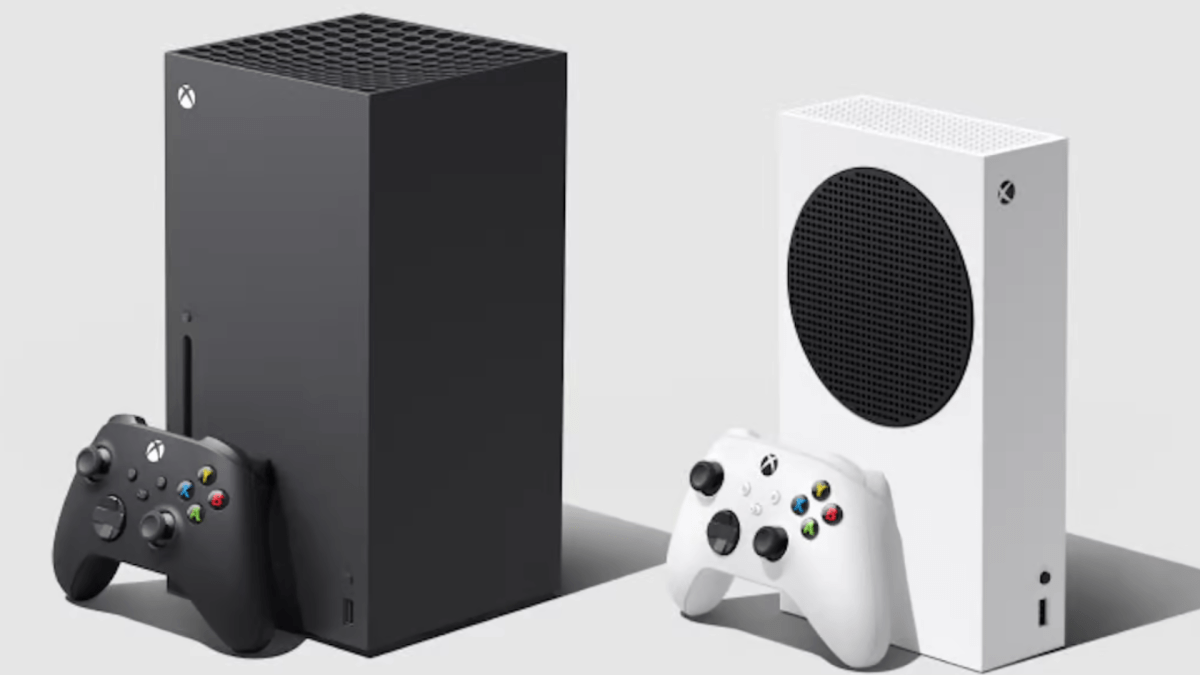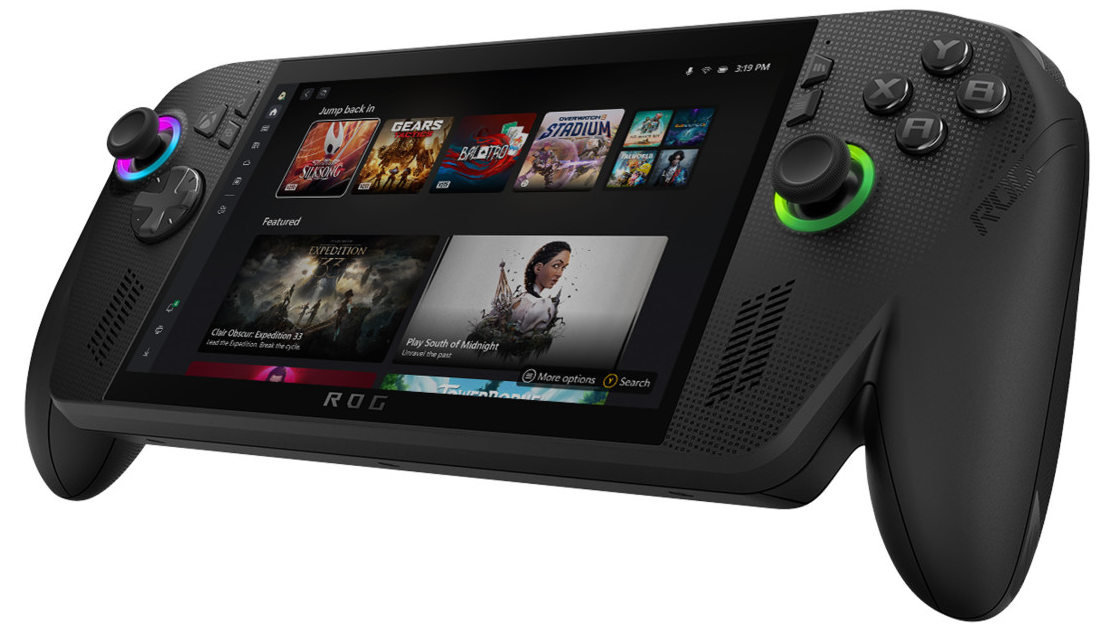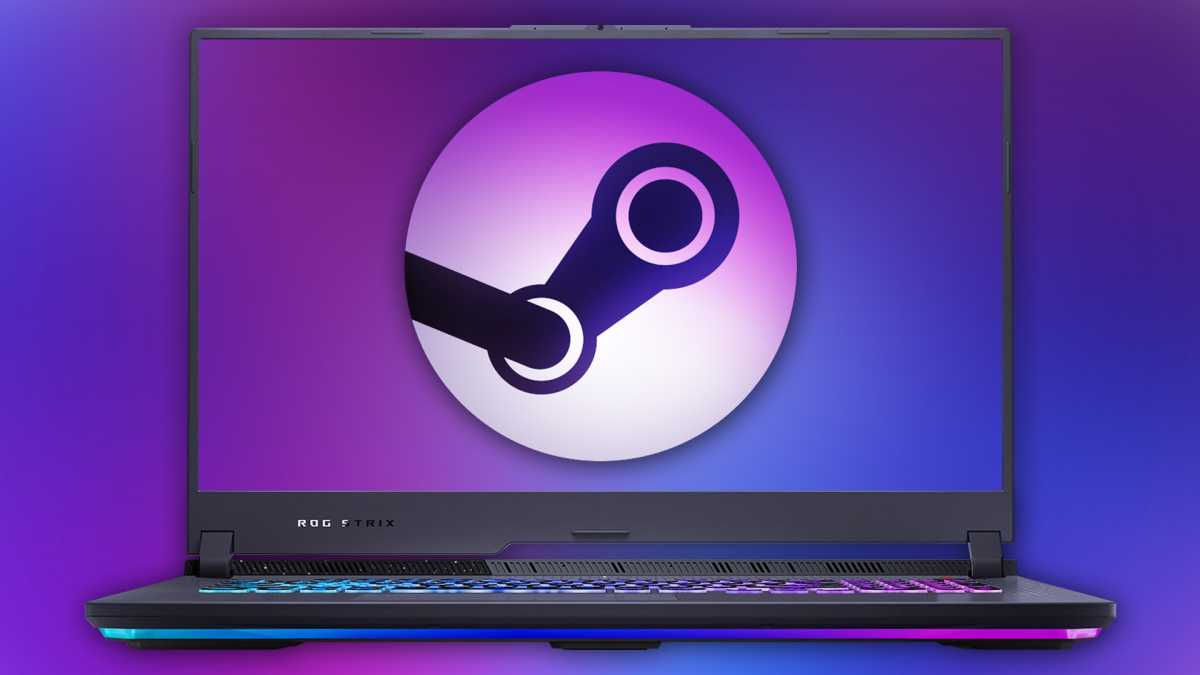#playALLYourgames proclaims the first bit of marketing copy for the ROG Xbox Ally, the third-gen Asus handheld PC that’s also borrowing Microsoft’s Xbox brand. “This is an Xbox,” declares the very next line. The design even gets a new, dedicated Xbox button right on its face.
But between the bombastic branding and the lack of the familiar bottom taskbar on any of the promotional images for this redesigned gaming gadget, it’s hard to tell that this is, in fact, a Windows-powered gaming PC. Asus and Microsoft seem far more interested in talking about a revamped full-screen interface for the dedicated Xbox app and the accompanying Game Bar than the underlying operating system that lets you play all your games.
It’s the defining feature of most handheld PCs versus Valve’s Linux-powered Steam Deck, which only just got its second official companion under the SteamOS umbrella (the Lenovo Legion Go S). Windows enables the ROG Xbox Ally—and all the handheld PCs that came after the Steam Deck—to play a wider gamut of games. The most notable among them are some of the most popular, including online multiplayer games that require proprietary anti-cheat software not available on Linux.
Handheld Windows gaming PC woes
The fact that Windows 11 is hidden behind layers of optimized user interface might seem a little strange. Unless, of course, you’ve actually used one of these Windows-powered handhelds. A common—hell, practically universal—complaint is that Windows 11 just isn’t built for a screen this small, or an interface that leans more on a game controller than a mouse or touchscreen.
Windows 11 is also far heavier in terms of system load than SteamOS, causing lower performance in games and faster battery drain. That’s why many users have tried rolling their own versions of SteamOS onto devices like the Ally, and why they’re excited that Valve is extending SteamOS support to other handhelds. Microsoft seems to have taken notice, as you’ll see later in this article.

Michael Crider/Foundry
It’s not as if Microsoft or Asus are completely hiding the fact that the ROG Xbox Ally runs Windows. Its ability to run all Windows-powered games is a touted feature. But even the name of the device, leaning on a console legacy that’s been notably distinct from Windows for most of its three-decade run, seems like it’s ashamed to admit that it’s a computer. You can, indeed, run Outlook on the ROG Xbox Ally, but you might make its RGB lights blush with embarassment if you tried.
The Xbox has seen better days…
It’s an odd situation, exacerbated by an extremely fluid and dynamic gaming market. Technically, PC gaming has never been hotter or more accessible versus consoles. Even if you’re running a 10-year-old clunker of a laptop, there are literally tens of thousands of games you can grab on Steam and enjoy, most of them relatively inexpensive.

Microsoft
The Steam Deck itself is proof that you don’t need a screaming gaming PC to dive into the space, as it’s making do with a relatively light laptop chip and no discrete GPU. And the Xbox brand, at least when restricted to its console namesake, isn’t looking so hot. The Xbox One got its boxy butt handed to it by the PS4 and the Switch, and the confusing and fragmented Xbox Series X/S hasn’t reversed course at all.
It’s bad enough that some analysts have been wondering if Microsoft is even going to bother with a fifth generation of Xbox console hardware. (The scuttlebutt right now is yes, it’s still coming.)
…but Xbox isn’t just the Xbox anymore
The box sitting next to your TV is no longer all that Xbox has to offer. Microsoft has spent hundreds of billions of dollars beefing up both its stable of game developers and publishers, and the Xbox Game Pass as a platform. Everything is now an Xbox, with phones, tablets, laptops, and smart TVs getting access to the biggest new games from Microsoft and its partners, either locally or via streaming. All it takes is yet another monthly subscription… but one that makes a damn good pitch for value, especially as new games stretch to $70 and $80 a pop.
Oh, yeah, Microsoft is on the $80 game train now. That was a less welcome surprise in its Sunday Xbox showcase where the ROG Xbox Ally was officially revealed. The fact that its primary gaming product is now a $20-per-month subscription is probably just a coincidence.
But I digress. Even if the Xbox hardware has become something of an albatross around Microsoft’s neck, the Xbox brand and service and its associated games are still very much in play. In that sense, and in the context of Microsoft’s ambitions to bring games to every possible screen in your life, the Xbox label on the Ally handheld makes sense.
No, it’s not the portable Xbox some fans have been waiting for since the days of the Duke… but in practical terms, it might as well be. It doesn’t run the even-more-locked-down OS powering the Xbox, but it plays basically every Xbox game that’s currently relevant, and a pretty good chunk of the console classics via streaming or a few bucks on Steam.
Windows 11 goes gamer mode
Scratch the surface of the new Xbox Ally and you’ll see it’s running Windows, which comes with as many problems as it solves (or more). Now that we have the Legion Go S, we can run head-to-head tests on identical handhelds running official builds of Windows 11 and SteamOS—and SteamOS is better by a considerable margin, even if you don’t care about longer battery life or a smoother interface. (And on a device that’s built on easy, fast access to games, you probably do.)
So what’s the solution if you’re Microsoft? Or, indeed, any of its hardware partners who want to sell Windows-powered handhelds? For the better part of a year, we’ve been hearing about how Windows is going to get better on these low-power, gaming-focused gadgets. The full-screen Xbox app interface is a big step, which is clearly trying to adapt some of the work Valve has put into SteamOS. And it’s not going to be exclusive to the ROG Xbox Ally, as Microsoft has already said it’ll be available to other handheld gaming PCs in 2026, shortly after the Asus launch.

Asus
A fresh UI is good news for anyone who dreads having to edit .ini files on a 7-inch touchscreen. The second part of the equation is slimming down Windows itself. According to Microsoft VP Jason Beaumont, the ROG Xbox Ally is essentially running a slimmed-down version of Windows 11 when it boots into that Xbox interface.
Windows 11 Home is still there, waiting just beneath the gaming veneer. But a lot of the gears that keep Windows compatible with software that was written 30 years ago are kept dormant until you switch to the regular desktop mode. “When the player boots into the full-screen experience, there is a whole bunch of Windows stuff that doesn’t get loaded,” Beaumont told The Verge. “We’re not loading the desktop wallpaper, the taskbar, or a bunch of processes that are really designed around productivity scenarios for Windows.”
“Players,” not “users,” I notice. And even though Xbox-branded software and the Xbox Game Pass service will be front-and-center in the interface, it’ll automatically populate your game library with titles from Steam, Epic, and other digital storefronts. This aggregated omnibus of local and streaming games will be the new standard for the Xbox app, on desktops and handhelds. And according to Beaumont, other Windows-powered handheld PCs will get the slimmed-down, gaming-focused launcher mode in 2026, too.
Handheld PC gaming in focus
That might be enough to make Windows-powered handhelds stand out against the Steam Deck, which is outselling them by an order of magnitude the last time I checked. The fact that these devices are getting access to much newer chips, from both AMD and Intel, is also worth considering. As wonderfully efficient as the Steam Deck is, newer AAA titles can tax it or sometimes even defeat it. That’s only going to become more apparent as the three-year-old Valve device shows its age and doesn’t appear poised for a significant update anytime soon.
Both Asus and Microsoft are leaning far more on the Xbox part of the ROG Xbox Ally than the “gaming PC” part, even though the latter is the bedrock of its hardware and software. But its success, and perhaps the continued viability of Windows in the handheld space, will still depend on how Microsoft adapts Windows to this burgeoning form factor.

Asus/Valve
One thing I’m hoping to see sooner or later, which I haven’t yet seen any evidence for, is full-power gaming laptops that run SteamOS out of the box. Now I’m wondering if a slimmed-down Windows 11, shifted into a leaner and more efficient “Xbox mode,” might be just as exciting. Maybe that Xbox logo could start appearing on Asus ROG laptops, too.
Hey, it’d make a cooler keyboard button than Copilot.
Melden Sie sich an, um einen Kommentar hinzuzufügen
Andere Beiträge in dieser Gruppe

It should come as no surprise that students the world over are using


Multi-screen laptops are a thing, and have been a thing for a while.


It might seem that “ChatGPT” is all you ever hear about when discussi

Just because it’s tiny doesn’t mean it’s not powerful. This Kamrui Hy

It’s summer, it’s hot, and even your laptop is struggling, so it’s ti
